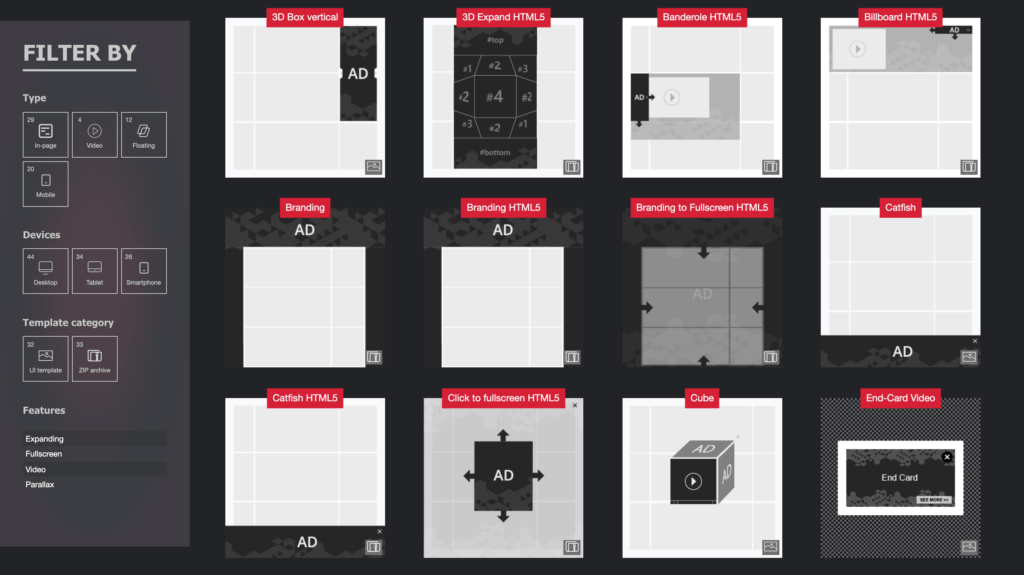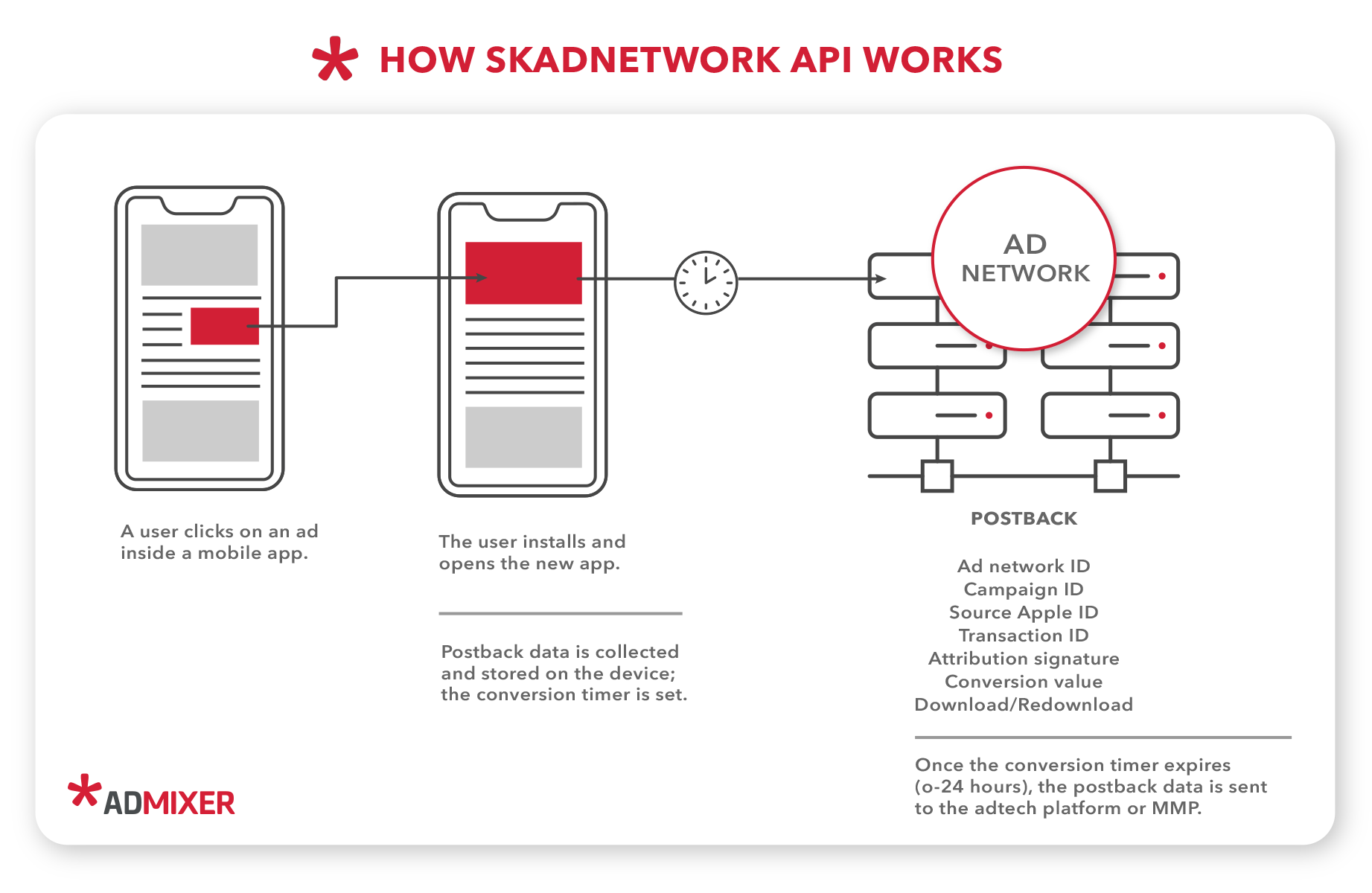
Mobile DSP: A Gateway To In-App Advertising
The mobile-first future came faster than expected. The pandemic and ongoing lockdowns dramatically shifted consumer preferences. While practicing social distancing, people resorted to their smartphones for work, entertainment and socialization. The daily time spent in-app increased to 3 hours 40 minutes globally.
In-app provides excellent reach and highly engaging ad formats to advertisers, and the key to placing ads in this medium is mobile DSP.
- What is a mobile DSP?
- Benefits of DSP mobile advertising
- More accurate targeting
- Tracking users in-app
- Engaging ad formats
- More time spend in apps
- Higher click-through rates
- Absence of ad block
- Higher supply of video ad slots
- Mobile Websites vs. Mobile Apps
- Issues with DSP mobile advertising
- IDFA
- GAID
- Mobile DSP platforms
- Admixer.DSP
- AdColony
- Admob
- Criteo
- To sum up
What is a mobile DSP?
Mobile DSPs are SaaS platforms that media buyers use to run ads on mobile inventory. They should be connected to various ad networks, SSPs, and ad exchanges with diverse inventory available through a single interface. Mobile DSPs should provide advertisers with access to real-time bidding and connected deals, and private marketplaces.
If the terms seem unfamiliar to you, read our detailed guide on DSP and its role in media buying.
Mobile DSP is not a designated platform, usually it is a feature inside the established DSP. The solutions for in-app inventory emerged inside the existing platforms for the demand side. Although it is a separate environment, it does not require a separate solution for media buying. Existing infrastructure can provide demand, a time-honored auction system, and a single interface. So when you need a mobile DSP, you should actually look for DSP with a good and diverse supply of in-app ad spaces.
Admixer.DSP is connected to SSPs that specialize in mobile inventory and have a choice of apps ranging from casual games to service apps. With Admixer.DSP advertisers can buy ad slots from Unity, LoopMe, Bigo (Likee, Imo), Opera, Xiaomi, and many more.
Benefits of DSP mobile advertising

More accurate targeting
With the announced phase-out of third-party cookies, the share of targetable impressions on the web will decline. Meanwhile, the mobile environment still has a reliable identifier — device ID.
Even before cookies phase-out, mobile IDs were better in tracking long-term user journeys due to their longer life-span than their web counterparts. In contrast to the web that soon can become nearly anonymous, device IDs can provide information on pre-install engagement (ad clicks or views) and in-app events.
Tracking users in-app
Due to the fact that apps can gather first-party data through user opt-in, they can pass to advertisers various targeting parameters such as age and gender. User segments enriched with this data are more effective for advertisers in search of the best-performing audience.
In addition, apps can collect geo-location information, giving advertisers additional instruments to ensure that ads reach potential customers in the right space and time.
Engaging ad formats
In-app has the toolset of highly engaging ad formats that can leave a lasting impression on consumers. First of all, mobile apps place ad slots during the natural pauses in the user activity or as native elements and don’t irritate users as much as standard banners.
Rewarded video ads allow users to get an in-app bonus for ad viewing, and lead the ad formats’ favourability rating.
Admixer.Creatives allows advertisers to craft mobile ads from scratch with an extensive library of templates, pay only for the delivered impressions and get real-time statistics on performance. Creatives is available as a module in Admixer.DSP and as a stand-alone product, which you can add to your existing tech stack.

More time spend in apps
Mobile users have gradually moved away from the mobile browser and shifted their priority to the diverse choice of apps.
According to an eMarketer report, smartphone users are spending over 90% of their time on mobile apps and only 10% on the mobile web. This behavioral change was swiftly noticed by advertisers that adjusted their ad spend. In a matter of a year, Facebook’s revenue from its mobile app grew from zero to 41% of its overall earnings.
Higher click-through rates
On top of all the benefits of tracking and targeting, in-app ads are simply more effective than web ads. A recent report by Appssavvy found that in-app ads perform 11.4 times better than standard web banner ads.
According to Marketing Dive, the click-through rate for apps is 0.58 %, whereas mobile web only has a 0.23 % CTR. In-app advertising allows a quite precise audience targeting that results in the good output of leads and conversions.
Absence of ad block
Web ads frequently fall victim to in-browser ad blockers. The majority of millennials and generation Z have some form of ad-blocking software and are unreachable for web campaigns.
The in-app environment does not have an ad-blocking counterpart, and advertisers enjoy access to diverse user segments. By adding in-app into the mix, advertisers can reach previously untapped demographics.
Higher supply of video ad slots
Video is highly-sought after inventory among advertisers, but it is very scarce on the web. Low quality web SSPs frequently engage in supply fraud where out-stream video slots are represented as in-stream.
That is not the case for the mobile environment that has an abundance of video inventory in very engaging formats, including the aforementioned rewarded video ads. This type of content is most memorable, as users retain 95% of the message in contrast to only 10% of the banner ad.
Mobile Websites vs. Mobile Apps
As you can see, in-app offers a much more dynamic medium ripe with possibilities for advertisers. It has more diverse and engaging ad formats that can grasp user attention, better tracking and attribution capabilities, and more readily available data.
| Mobile Apps | Mobile Websites | |
| Advertising ID | IDFA for iOS, GAID for Android | Cookies |
| Ad blocking | virtually absent | diverse market of ad blockers, very widespread practice |
| Average daily usage | 3 hours 40 minutes | 37 minutes |
| CTR | 0.58% | 0.23% |
| Available data | Behavioral data, web activity, shopping habits, favorite websites and content categories | Location data, device type, operation system, gender, age, network provider, pre-install engagement and in-app events |
Issues with DSP mobile advertising
IDFA
In 2021, Apple started implementing an explicit opt-in for in-app tracking, crippling IDFA — its advertising ID for the iOS environment. It is still unclear how many users will decide to opt-out, but even by the most conservative estimates, up to 50% of users on iOS will become untargetable.
Advertisers will be unable to accurately track attribution, cap frequencies, and avoid overspending. As an alternative, Apple suggests its updated SKAdNetwork API, a previously dormant solution to attribute installs and assess cohort effectiveness.
It is still unclear which attribution model will take hold in the landscape. Perhaps, a solution based on IDFV, which can lead to a wave of M&A in the app market.

GAID
The Android ecosystem has a different identifier for advertising — Google Advertising ID (GAID). It has not implemented measures similar to IDFA, so advertisers don’t have to worry about going blind in this environment. Nevertheless, Google and Apple usually repeat each other’s privacy initiatives, and it will be no surprise if Android makes tracking explicit for its devices as well.
GAID already has an extensive pre-install opt-in agreement regarding tracking, in line with the current privacy legislation. However, even if Google decides to reinforce tracking awareness with additional pop-ups and users massively opt-out, GAID won’t become obsolete.
It has an excellent feature for the post-install attribution – Google Play Store Referrer parameter. It can be added to links to pinpoint conversions and attribute installs. So even if the hypothetical massive GAID opt-out undermines retargeting, it won’t affect attribution.
Mobile DSP platforms
Admixer.DSP
Admixer DSP is connected to 100+ top SSPs and thematic ad networks and has an exclusive supply of mobile inventory, including Xiaomi, Opera, Unity, Outfit7, and BIGO apps (Likee and IMO). It is available as a standalone platform, as well as part of the integrated tech stack for agencies — Agency Tech Stack, and advertisers with an in-house media buying team — In-House AdTech Stack.
AdColony
This platform concentrated on the mobile inventory and built relationships with app developers and publishers from its inception. Today it has reached more than 1.5 billion users across the globe. It offers a variety of rich media, video, and interactive ad formats both on iOS and Android.
Admob
Admob is another heavy lifter on the in-app marketplace, previously an independent adtech player, it was bought by Google in 2009. It added more than a million app partners and became a major player in Android supply. Admob is interoperable, and through mediation, it can be a primary and secondary monetization partner for an app.
Criteo
This french programmatic solution concentrates on providing the most effective retargeting efforts through advanced machine learning technologies, the scale of its databases, orientation towards measurable ROI for their customers, and the ingenuity and motivation of more than 2,700 employees worldwide.
To sum up
Mobile DSP is not a separate entity, rather it is a title of the DSP with a large supply of mobile inventory. It should have all the regular DSP capabilities, such as data and creative management tools, and support popular in-app ad formats.
Mobile apps are experiencing an unprecedented surge in usage and offer excellent diverse audiences for targeting in contrast to the web with fading out addressability.




